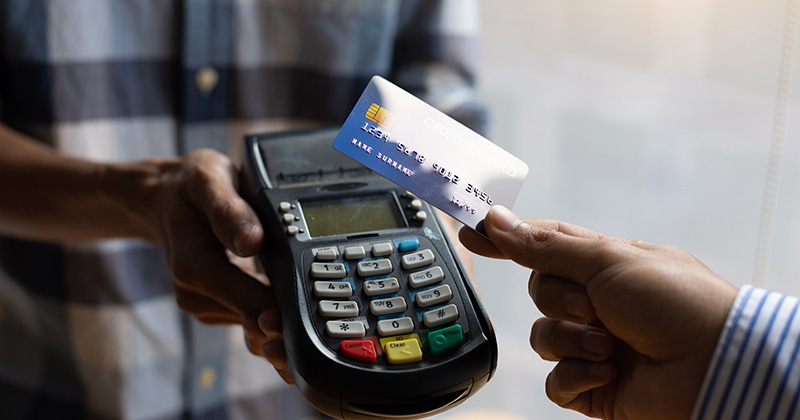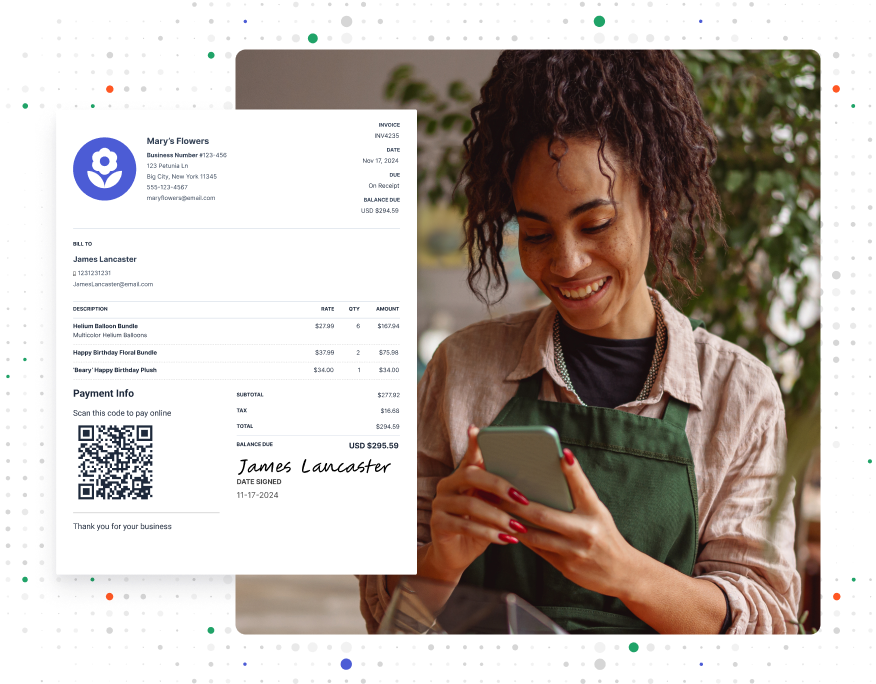6 Best Small Business Practices for Credit Card Payment Security

As a business owner, you know there are a number of reasons you should accept credit cards for payment. It’s what the modern-day consumer expects. Plus, it’s how you stay competitive and deliver five-star service.
But, if this is new for you, accepting credit cards can be a big step. It has security consequences that, if not dealt with, can have devastating, business-closing effects.
You can’t afford to overlook any risks relating to credit card payment security. So what exactly do you need to do? Follow the six best practices in this guide.
First, we’ll explain credit card payment security in the context of running a small business. Why is it so important?
Then, we’ll share some practical ways you can build strong payment security protocols. These best practices will protect your customer’s data and your business’s reputation.
To finish up, we’ll give you our top takeaway tips.
This isn’t just about doing good business. It’s about following the law. Here’s what you need to know.
RELATED ARTICLE: The 6 Best Small Business Payment Options
Understanding Credit Card Payment Security for Small Businesses

If you accept credit card payments, you are taking on a big responsibility. Your customers assume their information is safe—but is it, really?
After all, we live in a world where the most commonly reported fraud is the theft of digital information. It’s even more prevalent than physical theft.
Payment data is also at risk of unauthorized access and data breaches—regardless of where it’s processed. Cybercriminals are becoming more sophisticated. Now, 82% of all phishing attacks, for example, target mobile devices.
According to the Federal Communications Commission:
“Every business that uses the Internet is responsible for creating a culture of security that will enhance business and consumer confidence.”
The challenge is knowing where to start. But if you can overcome it, you benefit from the following:
- A rock-solid reputation
- Customers who trust you and will happily refer you to others
- Protection against attacks that compromise your clients’ and businesses’ data
- Stronger customer loyalty that keeps your schedule full
FROM ONE OF OUR PARTNERS: 6 Tips for Proper Handling of Credit Card Information
6 Best Practices for Credit Card Payment Security

Build a security culture so strong no malicious actor can penetrate it. Your business’s reputation depends on it.
Here are six best practices to follow:
1. Use a Secure Payment Processor
A payment processor is the company that manages the transaction between your client and your business. A good payment processor enables:
- Quick transactions
- Friction-free payments
- Multiple payment options
- Detailed and insightful financial reporting
Critically, they take security seriously. It’s built into the very fabric of their operations. They use the latest innovations to protect their clients against fraud, data breaches, and other cyber threats.
How can you verify whether a payment processor is secure? Here’s some guidance:
- See if they use tokenization. This is a security process that hides credit card details.
- Ask about their fraud detection services. Examples include 3D Secure 2.0 and Address Verification Service (AVS).
- Find out whether they enable multi-factor authentication (MFA). This means you have to enter more than one form of verification, like a password and a one-time code sent to your phone.
- Read reviews and use them to gauge the processor’s reputation. Have any real-world clients experienced security issues with them?
- Learn about their chargeback protection and dispute resolution strategies. Make sure these follow the relevant security standards.
2. Implement Data Encryption
Data encryption is the gold standard of payment security. It works like this:
- Your customer enters their credit card details. These are transformed—or encrypted—into a code.
- The code is so hard to understand that only the system with the key can decipher it.
- If someone were to intercept the transaction, the data would be useless. All they’d see is the code with no way to change it back to the original information.
Credit card information should be encrypted at rest and in transit. This means it’s inaccessible whether it’s stored in software or moving between two systems, like your website and the bank’s website.
Encryption is a technical thing, but don’t worry. It’s not up to you to build it from scratch. Instead, make it a non-negotiable when searching for a payment processor.
3. Comply with PCI Security Standards
PCI Data Security Standard (PCI DSS) is a set of rules that protect payment data online. Any business that handles credit card information must comply with these rules.
The standards explain how credit card data should be stored and protected. The goal is to make sure only authorized users—and not hackers—can see it.
Some measures include:
- Encrypting cardholder information
- Using antivirus software
- Creating strong and unique passwords
- Installing a firewall
- Assigning unique IDs to all people who have system access
- Maintaining an information security policy for all staff
Just like with encryption, your payment processor will take care of some of these steps for you. However, it’s a smart idea to learn more about PCI DSS and your responsibilities.
FROM ONE OF OUR PARTNERS: PCI Compliance Requirements for Small Businesses: Your Guide
4. Perform Regular Audits and Updates
Security threats evolve, and they become more urgent. In the first six months of 2024, there were a staggering 215,000 reported cases of credit card fraud.
To keep up, you need to stay on top of your security protocols. There are two ways to do this: perform audits and update your software.
Let’s start with security audits. This is the practice of looking at your payment system as a whole. Your goal is to find vulnerabilities you may have missed or that have become more pressing in light of the changing threat landscape.
During an audit, you might:
- Check that your business still meets the guidelines set out in PCI DSS.
- Look at your defenses. Is your encryption still working? What about your firewall? Have you got strong and functional access controls in place?
- Test your payment system for any security hiccups. You could even use specialized auditing software to flag weaknesses.
Then, there are security updates. These are much simpler. All you have to do is keep all the software you use updated to the latest version.
Why is this important? Because as threats change, different parts of software become vulnerable. Updates contain security patches that address these vulnerabilities. They might also add extra layers of protection.
Consider switching on automatic updates. That way, you won’t have to remember to do it manually.
5. Train Your Team on Payment Security
Payment security is a team effort. With 74% of data breaches caused by human error, your employees play a critical role.
According to leading cybersecurity training company Infosec:
“Security awareness training is one of the most effective ways to empower employees to recognize these threats — and help protect your organization.”
What might this look like in practice?
- Train staff on safe data handling. This includes things like encryption and MFA.
- Explain how to identify threats. For example, unexpected and declined transactions, new accounts, and suspicious locations are all signs of credit card fraud.
- Schedule regular training sessions. That way, you can keep the team informed about the latest security practices and emerging threats.
RELATED ARTICLE: Digital Payment Methods: How They Help Small Business Owners Combat Late Payments
6. Know How to Spot Fake Credit Cards
So far, the best practices we’ve covered relate to online payments. But fraud can happen in person too.
If your business accepts face-to-face payments, learn how to spot fake credit cards. You can use this insight to stop transactions before they result in fraud.
Here’s some advice:
- If a payer says their chip isn’t working, that’s a red flag. You might ask for an ID before manually entering the credit card information.
- Check the condition of the card’s magnetic strip. People using a fake card sometimes scratch or damage it. This forces the cashier to enter the information manually.
- Take some time to examine what a real card looks like. If you can, memorize the features of different card types.
- Look at the numbers on the card. Fraudulent credit cards are often produced in dodgy ways. This means the numbers might be irregular or hard to read. They might be crooked or not line up.
You can share these tips with your team too.
Takeaway Tips for Payment Security for Small Business Owners

Get started now with these takeaway tips:
- Review your payment processor. Are they still the best fit for your business? Can you be sure they are reliable and secure? If not, it might be time to look elsewhere.
- Learn what you need to do to meet PCI DSS. You’ll find a lot of resources on the PCI Security Standard’s website. Read them, take notes, and determine the steps you need to take to improve your compliance position.
- Schedule a security audit. Map out what you’re going to do. You might want to enlist the help of a tech-savvy team member too.
- Check if your software needs updating. This includes any software that processes or stores payment information. If it does need updating, do it now (or in the very near future if updating now will result in costly downtime). While you’re at it, turn on automatic updates.
- Enable MFA across all payment-related accounts. This helps protect your data from unauthorized or malicious access.
Start Your First
Invoice Today
Create customized and professional
invoices and connect with clients
